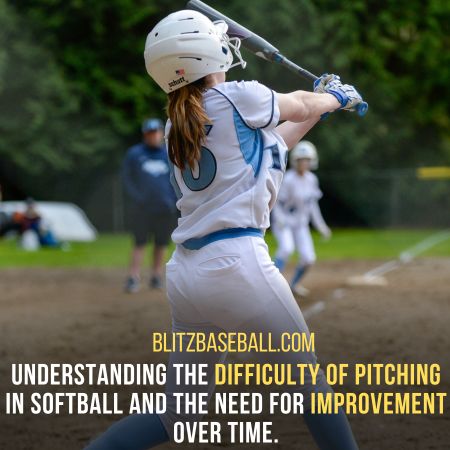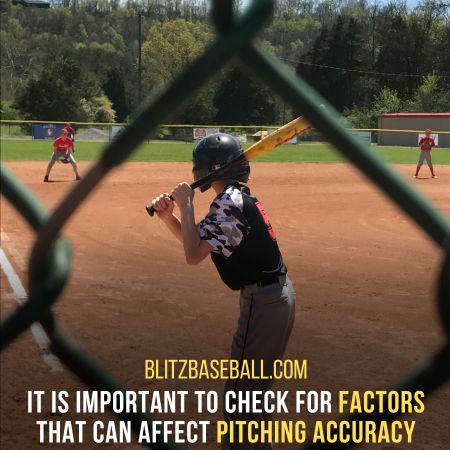Pitching is a fundamental aspect of softball that requires a comprehensive understanding of the key actions and techniques involved. This article aims to provide tips on pitching for beginners in softball.
The importance of gradual improvement over time is emphasized, along with the need to identify and address factors that can affect pitching accuracy. Furthermore, beginner players are encouraged to explore different pitching styles under parental guidance, allowing them to find a technique that suits their abilities.
The article covers various topics, including grip techniques, footwork, arm movements, posture, and follow-through. Additionally, it discusses the differences between softball and baseball swings and provides tips for throwing strikes and learning different types of fastballs.
Regular practice is emphasized as a crucial component in improving pitching technique. By following the nine basic actions outlined in this article, beginners can work towards becoming proficient pitchers in softball.
Key Takeaways
- Understanding the difficulty of pitching in softball and the need for improvement over time
- Importance of checking for factors that can affect pitching accuracy
- Allowing youngsters to explore different pitching styles under parental guidance
- Focus on teaching the fundamentals of pitching to beginner players
Pitching Basics: Pitching For Beginners In Softball
Pitching Basics in softball refer to the fundamental actions and techniques that beginners need to learn and master in order to become proficient pitchers.
Developing pitch velocity is crucial for a successful pitcher. This can be achieved through proper mechanics and strengthening exercises that focus on the lower body and core.
Additionally, practicing pitch location is essential for accuracy and control. Beginners should work on hitting specific targets consistently to improve their ability to place pitches where they want them. This can be done through repetitive drills and simulated game situations.
By mastering the basics of developing pitch velocity and practicing pitch location, beginners can lay a solid foundation for their pitching skills and work towards becoming pro-level pitchers.
Improving Pitching Accuracy
Improving accuracy in the delivery of the ball is crucial for achieving success in the sport. To enhance pitching accuracy, it is essential to focus on the mental aspect of pitching.
Maintaining concentration and staying mentally present throughout the pitch can significantly improve accuracy. Visualizing the desired outcome and executing the pitch with precision can help pitchers hit their target more consistently.
Incorporating strength training into pitching practice can also contribute to better accuracy. Strengthening the muscles used in pitching, such as the shoulders, core, and legs, can enhance control and stability during the delivery.
Exercises that target these muscle groups, such as resistance training and plyometrics, can improve overall pitching mechanics and increase the ability to hit specific spots.
By combining mental focus with strength training, pitchers can enhance their accuracy and become more effective on the mound. Practicing these techniques consistently and with dedication will lead to improved pitching accuracy and overall success in the game.

Learning Different Styles
One aspect to consider in the development of pitching skills is the exploration and exposure to various pitching styles. By allowing youngsters to explore different styles under parental guidance, they can develop a better understanding of their strengths and weaknesses.
This exploration not only helps in finding the right pitching style that suits their abilities but also enhances their adaptability to different game situations. It is important to note that there are various pitching styles in softball, including the windmill, slingshot, and sidearm techniques.
Each style has its own advantages and disadvantages, and players should be encouraged to experiment and learn from each style. This exposure to different styles not only broadens their pitching repertoire but also helps them develop a more well-rounded skill set.
Mastering the Fundamentals
Mastering the fundamentals of pitching motion is essential for developing a strong foundation in softball pitching. Perfecting pitch mechanics is a crucial aspect of this process. Beginners must focus on the proper grip, arm rotation, and release techniques to ensure accuracy and consistency in their pitches.
By practicing these mechanics repeatedly, pitchers can build muscle memory and improve their overall performance.
Additionally, building a pitch repertoire is vital for success on the mound. Pitchers should learn different types of pitches, such as the fastball, changeup, curveball, and screwball, to keep batters off balance and increase their chances of getting outs.
By mastering the fundamentals and expanding their pitch repertoire, beginner pitchers can lay the groundwork for becoming advanced and successful players in softball.

Frequently Asked Questions
What are some common mistakes that beginner pitchers make in softball?
Common mistakes in pitching technique include improper grip, lack of balance and body control, incorrect arm motion, poor follow-through, and failure to hit the desired target. Common misconceptions about pitching mechanics include the belief that speed is solely determined by arm strength and neglecting the importance of proper footwork and body positioning.
How can pitchers improve their speed and velocity?
Improving speed and velocity in softball pitching requires proper mechanics and strength training. Emphasizing leg drive, hip rotation, and arm speed can help generate more power. Incorporating exercises that target the core, legs, and shoulders can also enhance overall strength and speed.
Are there any specific drills or exercises to help with pitching control?
To improve pitching control, pitchers can incorporate drills such as target practice, focusing on hitting specific spots consistently. Exercises that enhance core strength and stability can also be beneficial. Additionally, pitchers should work on addressing pitching mistakes, managing nerves, and establishing effective communication with catchers.
What are some strategies for dealing with nerves or pressure during a game?
Strategies for calming nerves and handling pressure during a game include deep breathing exercises, visualization techniques, positive self-talk, focusing on the present moment, and having a pre-game routine. It is important to stay confident and trust in your skills.
How can pitchers effectively communicate and work with their catchers?
Pitchers and catchers can build trust and effective communication through regular practice, open dialogue, and understanding each other’s strengths and weaknesses. Developing a strong pitcher-catcher relationship is crucial for success on the softball field.

Conclusion
In conclusion, developing pitching skills in softball requires a solid understanding of the fundamental actions and techniques involved in the sport.
Beginners should focus on improving their pitching accuracy by gradually improving their grip techniques, footwork, arm movements, posture, and follow-through.
It is important to teach the fundamentals to beginners and allow them to explore different pitching styles under parental guidance.
Regular practice is crucial for improving pitching technique, and pitchers should strive to master the basics before moving on to advanced techniques.
With dedication and persistence, beginners can become proficient pitchers in softball.
